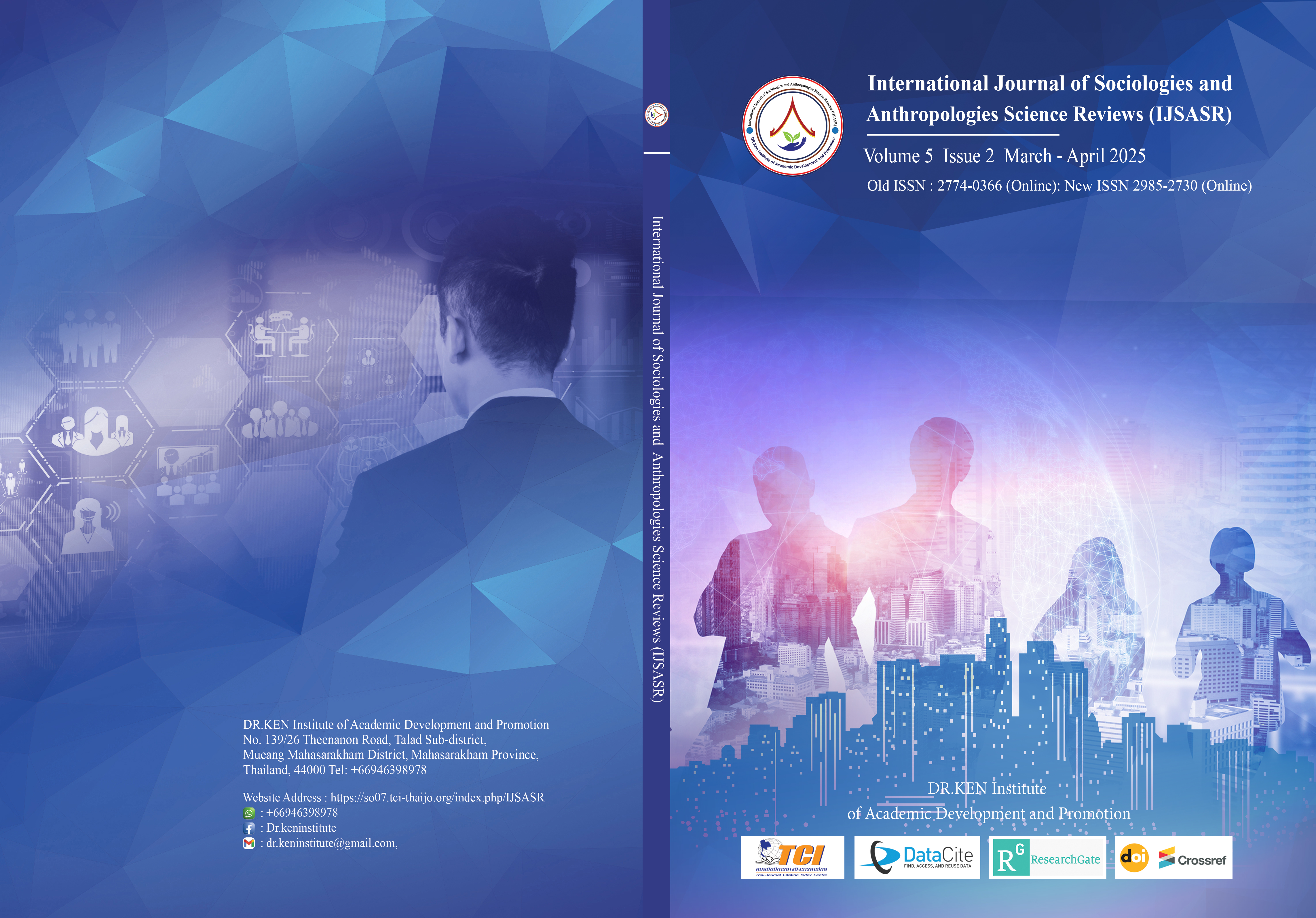The Effects of Plyometric Training on 50 Meters Crawl Swimming Speed Performance in Swimmers
Main Article Content
Abstract
Background and Aim: This research aimed to study and compare the effects of plyometric training on crawl swimming speed performance in swimmers.
Materials and Methods: This research employed a quasi-experimental design. The subjects were selected from a population of 43 swimmers tested in a 50-meter freestyle swim. The times were recorded and ranked from highest to lowest. A total of 20 swimmers were selected using the ranking method, and they were divided into two equal groups of 10 by drawing lots: an experimental group and a control group. The experimental group performed plyometric training, while the control group underwent traditional training. Both groups trained twice a week for eight weeks. The 50-meter crawl stroke speed was measured before and after the experiment. The data were analyzed using means, standard deviations, and a t-test to determine the significant differences in performance before and after the experiment, as well as between the two groups.
Results: After eight weeks of training, the results indicated that: 1) The 50-meter crawl stroke speed in both the control and experimental groups improved significantly compared to pre-training levels (p < .05). 2) There were significant differences in the 50-meter crawl stroke speed between the control and experimental groups, with the experimental group showing greater improvement (p < .05).
Conclusion: The findings of this study demonstrated significant improvements in swimming speed for both the conventional and plyometric training groups at the 0.05 significance level. However, the plyometric training group showed notably greater improvements in speed compared to the conventional training group. These results suggest that plyometric training enhances 50-meter freestyle swimming performance by improving muscle strength, speed, and coordination. Incorporating plyometric exercises into conventional training programs could provide athletes with a competitive edge, as it focuses on both power development and the quick muscle response necessary for optimal swimming performance.
Article Details

This work is licensed under a Creative Commons Attribution-NonCommercial-NoDerivatives 4.0 International License.
Copyright on any article in the International Journal of Sociologies and Anthropologies Science Reviews is retained by the author(s) under the under the Creative Commons Attribution-NonCommercial-NoDerivatives 4.0 International License. Permission to use text, content, images, etc. of publication. Any user to read, download, copy, distribute, print, search, or link to the full texts of articles, crawl them for indexing, pass them as data to software, or use them for any other lawful purpose. But do not use it for commercial use or with the intent to benefit any business.

References
American Academy of Pediatrics. (2019). Caring for your baby and young child: Birth to age 5. Bantam.
Barbosa, T. M., Bragada, J. A., Reis, V. M., Marinho, D. A., Carvalho, C., & Silva, A. J. (2010). Energetics and biomechanics as determining factors of swimming performance: updating the state of the art. Journal of science and medicine in sport, 13(2), 262-269.
Cleather, D. J., & Cushion, E. J. (2019). Muscular coordination during vertical jumping. Journal of Human Performance and Health, 1, 1-10.
Haff, G. G. (2013). Periodization strategies for youth development. In Strength and Conditioning for Young Athletes (pp. 171-190). Routledge.
Kiely, J. (2012). Periodization paradigms in the 21st century: evidence-led or tradition-driven? International journal of sports physiology and performance, 7(3), 242-250.
McKinlay, B. J., Wallace, P., Dotan, R., Long, D., Tokuno, C., Gabriel, D. A., & Falk, B. (2018). Effects of plyometric and resistance training on muscle strength, explosiveness, and neuromuscular function in young adolescent soccer players. The Journal of Strength & Conditioning Research, 32(11), 3039-3050.
Potdevin, F. J., Alberty, M. E., Chevutschi, A., Pelayo, P., & Sidney, M. C. (2011). Effects of a 6-week plyometric training program on performances in pubescent swimmers. The Journal of Strength & Conditioning Research, 25(1), 80-86.
Price, T., Cimadoro, G., & S Legg, H. (2024). Physical performance determinants in competitive youth swimmers: A systematic review. BMC Sports Science, Medicine and Rehabilitation, 16(1), 20. DOI:10.1186/s13102-023-00767-4
Sammoud, S., Negra, Y., Chaabene, H., Bouguezzi, R., Moran, J., & Granacher, U. (2019). The effects of plyometric jump training on jumping and swimming performances in prepubertal male swimmers. Journal of sports science & medicine, 18(4), 805.
Zhao, Z., Zhu, J. M., Cui, H. P., & An, M. J. (2022). Design and evaluation of a multimodal balance training system. American journal of translational research, 14(10), 6889.






